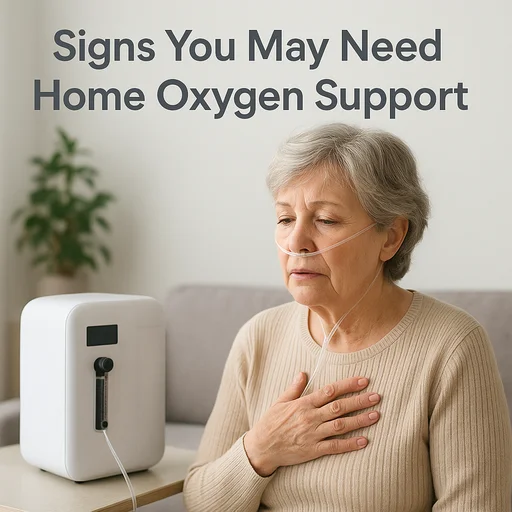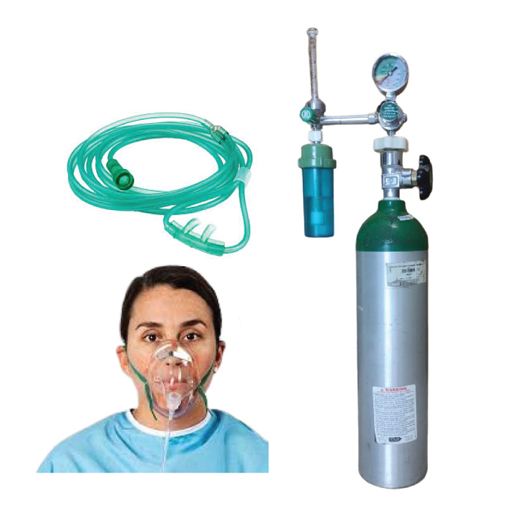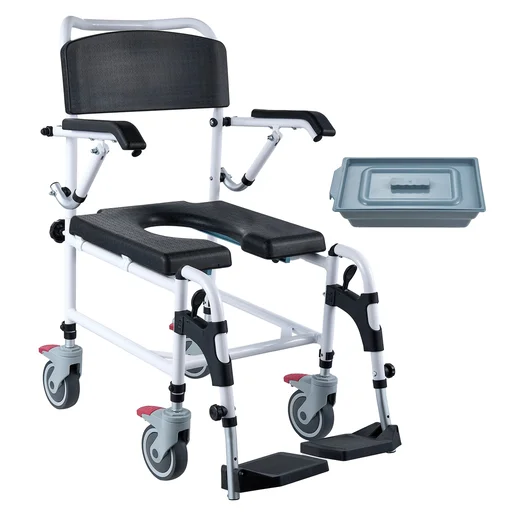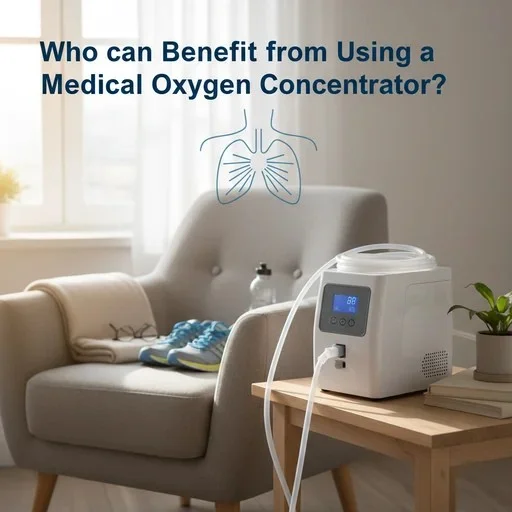Your body runs on oxygen. Every cell, every organ, depends on it. But sometimes, breathing alone isn’t enough to get what you need.
It’s easy to brush off feeling tired or blame the stairs for leaving you breathless. But these symptoms can signal something more serious. When your lungs can’t pull enough oxygen from the air, your body sends warning signs. Recognizing them early can empower you to take proactive steps to improve your health and quality of life.
Understanding Why Your Body Needs Oxygen
Think of oxygen as the fuel for your body. When you breathe, your lungs take in oxygen from the air and send it into your bloodstream. Your blood then carries oxygen to your organs and tissues. Without sufficient oxygen, your organs cannot function properly. Knowing this connection can help you feel more aware of your health.
Low blood oxygen levels, called hypoxemia, can be life-threatening. Your brain, heart, and kidneys are especially at risk. They need a steady supply of oxygen to function well. Recognizing this urgency can encourage you to seek medical help promptly.
The Most Common Warning Signs
Shortness of Breath That Won’t Quit
This is often the first red flag. If you’re experiencing breathing difficulties, even while resting or performing light activities, it may indicate the need for oxygen support. We’re not talking about being winded after climbing several flights of stairs. This is different.
It’s the kind of breathlessness that comes from walking to the bathroom and or getting dressed in the morning. Activities that used to be effortless now leave you gasping.
Persistent Fatigue and Low Energy
Everyone feels tired sometimes. But this is exhaustion that sleep doesn’t fix. Low oxygen levels overnight can impact sleep quality and leave you feeling exhausted during the day. You wake up feeling drained, not refreshed.
Your body is working overtime to compensate for low oxygen levels. That takes energy—a lot of it.
Changes in Skin Color
Pay attention to your appearance. Bluish coloring in the face, lips, or nails can indicate low oxygen levels. This condition, known as cyanosis, occurs when blood fails to carry enough oxygen.
It might be subtle at first. A slight grayish tint to your skin. But it’s a clear signal your body isn’t getting what it needs.
Heart Racing for No Reason
When oxygen levels drop, your heart rate increases as the body works harder to deliver oxygen throughout the system. You might notice your pulse is faster than usual, even when you’re sitting still.
Your heart is trying to compensate. It’s pumping harder, faster, attempting to circulate what little oxygen is available.
Confusion and Mental Fog
Your brain is susceptible to changes in oxygen levels. Without enough oxygen, you may experience confusion, difficulty concentrating, and cognitive changes. Thoughts become fuzzy. Making decisions feels harder than it should.
This isn’t just a result of aging or stress. It’s your brain literally not getting enough fuel to function correctly.
Swelling in Your Extremities
Swelling in the legs, arms, or ankles, especially when combined with other symptoms, may indicate you need oxygen support. This happens because your heart is struggling to pump blood effectively throughout your body.
The swelling usually starts in your feet and ankles. By the end of the day, your shoes feel tight. Your legs feel heavy.
Medical Conditions That Often Require Oxygen Support
COPD and Chronic Lung Diseases
Chronic Obstructive Pulmonary Disease (COPD) and similar conditions often lead to progressively worsening shortness of breath over time. If you have COPD, your doctor will closely monitor your oxygen levels to ensure optimal treatment.
Medical guidelines recommend long-term oxygen therapy for at least 15 hours daily when oxygen saturation falls to 88% or below.
Heart Conditions
Heart failure can prevent adequate oxygen delivery throughout your body. When your heart can’t pump effectively, even if your lungs are functioning correctly, your tissues may not receive enough oxygen.
Severe Asthma and Respiratory Infections
During asthma attacks or severe respiratory infections, such as pneumonia, oxygen levels can drop dangerously low. Temporary oxygen support may be necessary during these acute episodes.
How Doctors Determine If You Need Oxygen
Pulse Oximetry Testing
This simple test uses a small device that clips onto your finger. A pulse oximeter measures oxygen levels in your blood by sending light beams through your skin. It’s painless and provides immediate results.
Normal oxygen saturation levels range from 95% to 100%. If yours drops below 88%, you may qualify for oxygen therapy. Many people now keep a pulse oximeter at home for regular monitoring of their health.
Arterial Blood Gas Test
For a more precise measurement, your doctor might order this blood test. This test uses a blood sample from an artery to measure oxygen and carbon dioxide levels, providing the most accurate assessment of lung function.
Walking Tests
Your doctor may perform a six-minute walk test with a pulse oximeter on your finger to measure how your oxygen levels respond to activity. This indicates whether you require oxygen during exercise or physical activity, even if your resting levels appear normal.
Types of Home Oxygen Systems
If testing indicates that you require supplemental oxygen, several delivery options are available. Each has its own advantages depending on your lifestyle and oxygen requirements.
Oxygen Concentrators
These electric or battery-powered devices pull air from the room, separate and compress oxygen from the air, and remove nitrogen. The advantage? You’ll never run out of oxygen. Many models are portable, and some are even approved for air travel.
At Marium Oxygen, we provide high-quality oxygen concentrators that are reliable and easy to use at home.
Oxygen Cylinders
Compressed gas systems store oxygen in portable tanks, with larger stationary concentrators used for home use and smaller tanks for use on the go. These are ideal for individuals who require flexibility and adaptability.
We offer a complete range of oxygen cylinders for sale, rent, and refill services. Our delivery team provides installation support and 24/7 assistance throughout Dhaka.
Delivery Methods
Most people receive oxygen through a nasal cannula—a small tube with prongs that sits inside your nostrils. It’s comfortable for extended wear and allows you to talk and eat normally.
The Benefits of Oxygen Therapy
Starting oxygen therapy can be life-changing. When oxygen levels are restored, patients typically feel more energetic and can engage more easily in everyday activities.
You may experience relief from symptoms such as shortness of breath, fatigue, dizziness, and depression. Many people become more alert, sleep better, and experience a better mood.
Oxygen therapy reduces strain on the heart and lungs, supporting cardiovascular and respiratory stability. For people with COPD, it can significantly improve both the quality and length of life.
Important Safety Considerations
Oxygen requires careful handling. While oxygen itself isn’t flammable, it’s necessary for combustion, meaning fires in areas with excessive oxygen burn more quickly.
Never smoke while using oxygen. Keep your equipment away from open flames, stoves, and space heaters. Install additional smoke detectors in your home for safety.
Store oxygen cylinders securely and keep them upright to prevent leakage. Avoid using petroleum-based products, such as petroleum jelly (also known as Vaseline), near your oxygen equipment.
Getting Started with Home Oxygen Support
If you’re experiencing any of these warning signs, don’t wait. Schedule an appointment with your doctor for proper testing and evaluation.
If oxygen therapy is recommended, your healthcare provider will prescribe the specific amount of oxygen you need, which is tailored to your condition. This prescription specifies the amount of liters per minute you should receive and when you should use it.
At Marium Oxygen, we make accessing medical equipment simple. We’re a government-approved oxygen supplier serving the Dhaka division. Our services include:
- Free and fast delivery (60 minutes inside Dhaka city)
- 24/7 customer support for emergencies
- Cash on delivery options
- Expert installation assistance
- Affordable pricing on all equipment
Beyond oxygen supplies, we also provide hospital beds, wheelchairs, CPAP machines, nebulizer machines, and suction devices to meet comprehensive home healthcare needs.
Living Well with Oxygen Therapy
Many people feel anxious about starting oxygen therapy. That’s natural. But it’s not a sign of giving up. It’s a tool that helps you live a better life.
Some people require oxygen constantly, while others only need it occasionally or during specific activities, such as exercising or sleeping. Your needs are unique to you.
Modern portable systems mean you can maintain your independence. Travel, visit friends, pursue hobbies. Your oxygen doesn’t have to hold you back.
What this really means
Your body gives you signals when something’s wrong. Persistent breathlessness, crushing fatigue, confusion, or changes in skin color aren’t things to ignore. They’re your body’s way of asking for help.
People live for years using supplemental oxygen when it’s properly prescribed and used. Getting the oxygen support you need can restore your energy, improve your sleep, sharpen your mind, and help you regain activities you thought were lost forever.
Listen to what your body is telling you. Talk to your doctor about testing. And if oxygen therapy is recommended, know that reliable support is available right here in Bangladesh through trusted providers who understand your needs and are ready to help around the clock.








